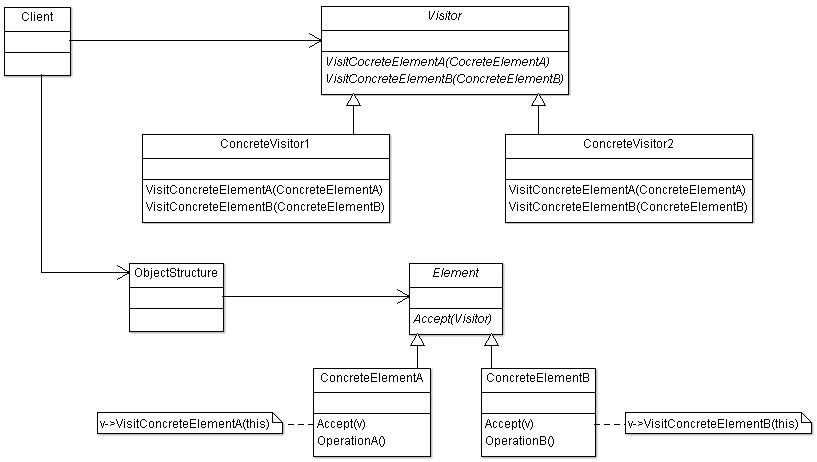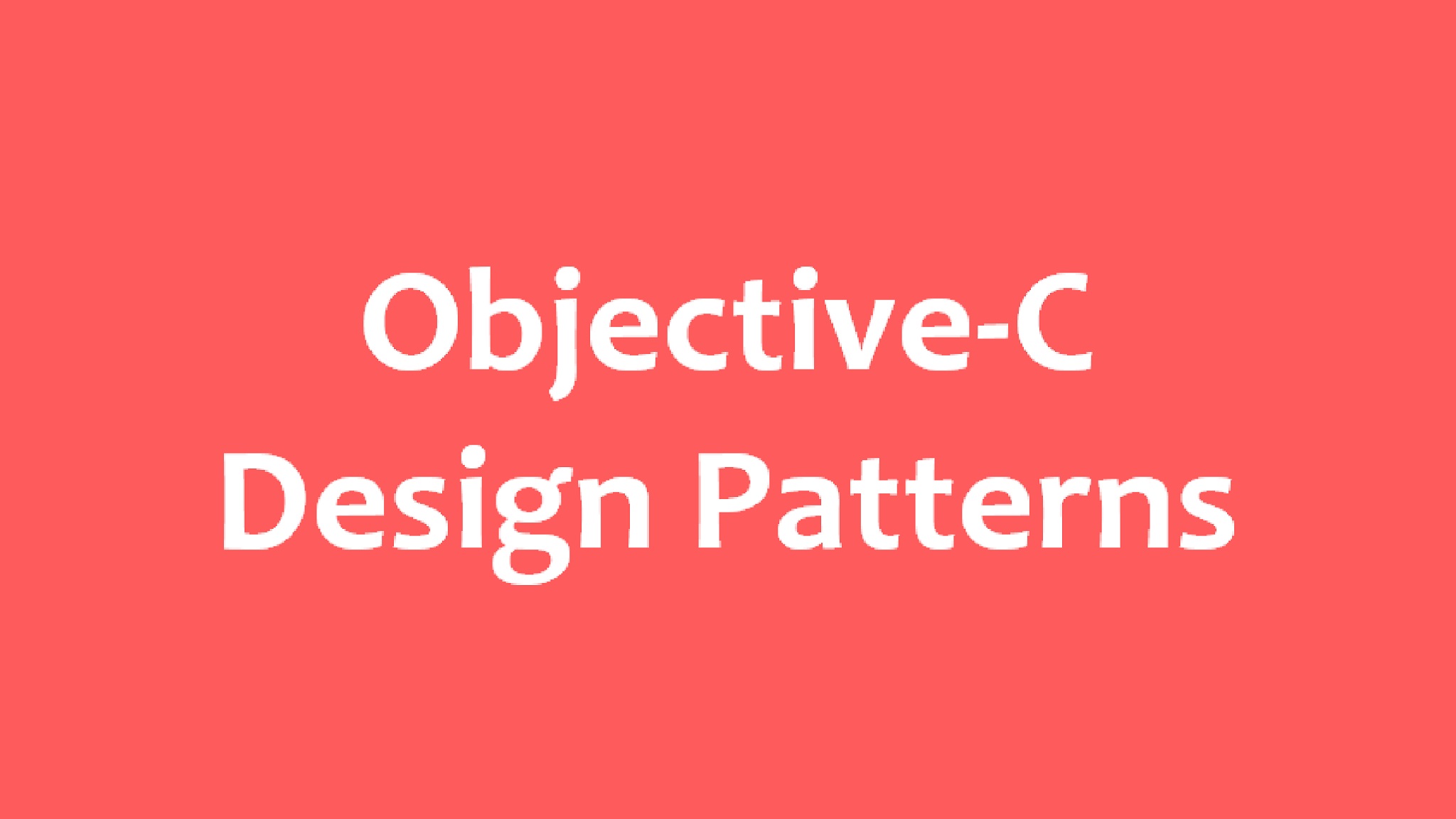> Design Patterns > Visitor Design Pattern
Visitor Design Pattern
Visitor design pattern is used to perform operation on elements of an object structure.
Intent
- Represent an operation to be performed on the elements of an object structure. Visitor lets you define a new operation without changing the classes of the elements on which it operates.
The intent of visitor design pattern is to represent the operation of element of object structure by visitor.
Problem
- An object structure contains many objects. There is a need to perform different operations on these objects. Doing these operations in their classes will add complexity.
Adding different and unrelated operation in class will lead to confusion and will make it complex.
Solution
- Have a separate object for operations of an element of object structure. Call the appropriate concrete object operation of that element when you traverse the elements.
So there will be visit operation for each element of object structure in separate class. While visiting the element the appropriate operation will be performed.
Where visitor design pattern is applicable?
- An object structure has multiple objects and need to visit and apply the operations on it.
Visitor Design Pattern UML Structure

Participant classes of visitor design pattern
- Visitor class provides interface for visit operation for each element of object structure.
- Concrete classes ConcreteVisitor1 and ConcreteVisitor2 implement the methods for the interface provided by abstract class Visitor. These methods have element instance as parameter.
- Element class is part of ObjectStructure. It has method Accept() which gets Visitor instance as parameter.
- The concrete class ConcreteElement class implements the method Accept() which in turn calls the appropriate Visitor method.
- ObjectStructure may contain multiple elements. Visitor visits the elements of ObjectStructure.
How they work together?
- The client creates the concrete visitor. While traversing the element of object structure it calls the element Accept() method with visitor as parameter. Inside Accept() method it uses visitor to call visit operation for that element with element as parameter. Inside the visit element operation it does the appropriate work applicable for that operation.
- So here the operation is performed on elements of ObjectStructure. This provides flexibility to add new operation by adding a new visitor. It is assumed that object class structure will not be changed much. Adding a new element is complicated and will require adding of new abstract operation in visitor class and its implementation in concrete classes. So it is good to use visitor pattern when object structure is stable and addition or modification is required on operations.
Visitor Design Pattern Example
Here is the visitor design pattern example.
System Manager manages variety of systems - Windows, Linux, IBM, applications (group of systems) etc. It needs system operations feature to start, stop, restart any type of system/application. Also it requires features to change the configuration of any type of system/application.
Implementation Code
| C++ | Visitor Pattern in C++ | Visitor Pattern C++ Example |
| C# | Visitor Pattern in C# | Visitor Pattern C# Example |
| Java | Visitor Pattern in Java | Visitor Pattern Java Example |
| Python | Visitor Pattern in Python | Visitor Pattern Python Example |
| JavaScript | Visitor Pattern in JavaScript | Visitor Pattern JavaScript Example |
| PHP | Visitor Pattern in PHP | Visitor Pattern PHP Example |
| Ruby | Visitor Pattern in Ruby | Visitor Pattern Ruby Example |
| Swift | Visitor Pattern in Swift | Visitor Pattern Swift Example |
| Objective-C | Visitor Pattern in Objective-C | Visitor Pattern Objective-C Example |
Suresh Kumar Srivastava is founder of online learning site coursegalaxy.com and author of popular books C In Depth, Data Structures Through C In Depth. He has 18+ years experience in industry and worked on architecture and design of multiple products. This article Visitor Design Pattern is from his Design Patterns course.

